Rose Sommerfield (1874–1952) was an American teacher, activist, and social worker. She helped to develop the first home for Jewish working girls in the United States.

Pauline Agassiz Shaw was an American philanthropist and social reformer who opened day nurseries, settlement houses, and other establishments in Boston to help new immigrants and the poor. She financed public kindergartens, and co-founded America's first trade school, the North Bennet Street School. She was also a vocal advocate for women's rights.

Cornelia Collins Hussey was a 19th-century American philanthropist, suffragist, and writer. Her generous financial support had been indispensable to the New Jersey state association. Hussey died in 1902.
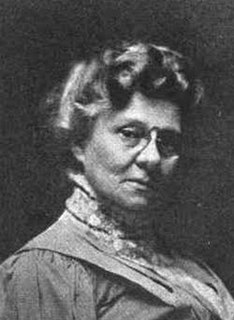
Cornelia Foster Bradford was an American philanthropist and social reformer. She established a settlement house in Jersey City, New Jersey, in 1894.

The College Settlements Association (CSA) was an American organization founded during the settlement movement era which provided support and control of college settlements for women. Organized February 1890, it was incorporated on January 5, 1894. The settlement houses were established by college women, were controlled by college women, and had a majority of college women as residents. The CSA was devised to unite college women in the trend of a modern movement, to touch them with a common sympathy, and to inspire them with a common ideal. It was believed that young students should be quickened in their years of vague aspiration and purely speculative energy by possessing a share in this broad practical work.

Settlement and community houses in the United States were a vital part of the settlement movement, a progressive social movement that began in the mid-19th century in London with the intention of improving the quality of life in poor urban areas through education initiatives, food and shelter provisions, and assimilation and naturalization assistance.

Rivington Street Settlement was an American settlement house which provided educational and social services on the Lower East Side of the Manhattan borough of New York City, New York. Under the auspices of the College Settlements Association (CSA), it focused on the mostly immigrant population of the neighborhood. Originally located at 95 Rivington Street (1889-), other locations later included 96 Rivington Street (1892-1901), 188 Ludlow Street (1902–), 84-86 First Street (1907-), and Summer Home, Mount Ivy, New York (1900-). The Rivington Street Settlement was established by college women, was controlled by college women, and had a majority of college women as residents. The Rivington Street Settlement was a kind of graduate school in economics and sociology, with practical lessons in a tenement–house district - a kind of sociological laboratory.

College Settlement of Philadelphia is an American outdoor camp and school located in Horsham, Pennsylvania. Established in 1892, it was originally associated with the settlement movement under the auspices of the College Settlements Association (CSA) to provide educational and social services in South Philadelphia, Pennsylvania, focusing on the mostly immigrant population of the neighborhood it served, and providing a home to the children and young people of the neighborhood.

Casa de Castelar was an American settlement in Los Angeles, California. It was founded in February 1894, during the settlement movement era, by a local branch of the College Settlements Association called the Los Angeles Settlement Association (LASA). Casa de Castelar was the first settlement house in the city, and the first settlement house west of the Mississippi River.

Goodrich Social Settlement was the second settlement house in Cleveland, Ohio, after Hiram House. It organized on December 9, 1896, incorporated May 15, 1897, and opened May 20, 1897 at Bond St. and St. Clair Ave. It was established by Flora Stone Mather as an outgrowth of a boys' club and women's guild conducted by the First Presbyterian Church. Its aims were “to provide a center for such activities as are commonly associated with Christian social settlement work". It was maintained by an endowment. The Goodrich House Farm, in Euclid Point, Ohio, was part of the settlement.

Alice P. Gannett was an American settlement house worker and social reformer. The Goodrich-Gannett Neighborhood Center in Cleveland, Ohio, is named in her honor.

University of Chicago Settlement was a settlement of the University of Chicago. It was established January, 1894, by the Philanthropic Committee of the Christian Union of the University of Chicago. Initially, two graduate students were in residence "to provide a center for educational, religious and philanthropic work." Mary McDowell became head resident September 15, 1894.
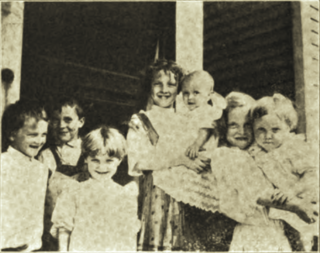
Neighborhood House was an American settlement house in Chicago, Illinois. It was opened in October 1896, by Samuel S. and Harriet M. Van Der Vaart, under the auspices of the Young People's Society of the Universalist Church, of Englewood, Chicago, and with the assistance of teachers of the Perkins, Bass, and D. S. Wentworth public schools. It was officially established in the Fall of 1897 by Harriet Van Der Vaart as the outgrowth of the kindergarten opened the year before "to bring together for mutual benefit people of different classes and conditions."
Neighborhood House is an American community center located in Louisville, Kentucky. Founded in 1896, as North Broadway Social Settlement it was renamed Neighborhood House in 1902, when it incorporated.
Whittier House was an American social settlement, situated in the midst of the densely populated Paulus Hook district of Jersey City, New Jersey. Christian, but non-denominational, its aims were to help all in need by improving their circumstances, by inspiring them with new motives and higher ideals, and by making them better fitted by the responsibilities and privileges of life. It cooperated with all who were seeking to ameliorate the human condition and improve the social order. It opened in the People's Palace, December 20, 1893. On May 14, 1894, it incorporated and moved to 174 Grand Street.
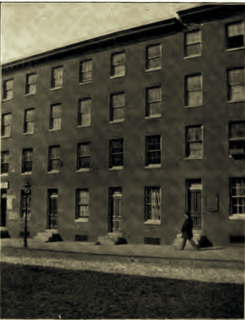
Lawrence House was an American social settlement in Baltimore, Maryland. Its beginnings were in 1893, when Rev. Dr. Edward A. Lawrence and a friend took up lodging at 214 Parkin Street. Lawrence died suddenly later in 1893, and in his memory, the Lawrence Memorial Association organized in 1894 and purchased a house at 816 West Lombard Street. The settlement incorporated in the Fall of 1900. In 1904, the place was enlarged by the addition of the adjoining house, 814 West Lombard Street.
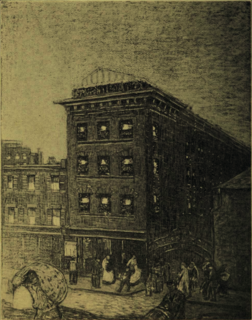
Civic Service House was an American social settlement and a school for citizenship, located at 110-112 Salem Street, Boston, Massachusetts. Established October, 1901, by Pauline Agassiz Shaw as a center for civic education, recreation, and organization for the common good. The house set out to do specialized settlement work along civic lines, and purposed to reach a constituency approaching or within the privileges of citizenship. The character of work was that with adult immigrants, in clubs, classes, lectures and civic committees. The constituency included Jews, Italians, Poles and Irish. Improvement clubs, educational classes for men and women, occasional concerts and recreational features were available, but these were subordinate to the effort for civic betterment. Children's work was not included, and social features were made incidental to a program of study and service.
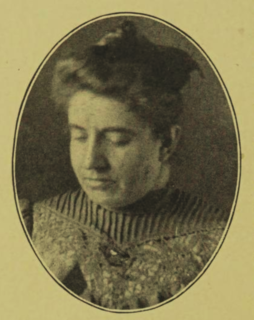
Anna E. Nicholes was an American social reformer, civil servant, and clubwoman associated with women's suffrage and the settlement movement in Chicago. She devoted her life to charitable and philanthropic work.
Lowell House was an American social settlement, the first in New Haven, Connecticut. Established in 1900, it formed an association in 1903.

South Park Settlement was an American settlement movement-era settlement established in the South Park neighborhood of San Francisco, California on January 2, 1895, by the San Francisco Settlement Association. It was founded in one of the crowded districts of San Francisco. The pretty little oval park on which the Settlement House faces was formerly the fashionable residence district of the city. But within a few blocks on either side of South Park were many little streets, whose crowded tenements furnished homes for less prosperous working people. Its goals were to establish and maintain a settlement in San Francisco as a residence for persons interested in the social and moral condition of its neighborhood; to bring into friendly and helpful relations with one another the people of the neighborhood in which the settlement was situated; to cooperate with church, educational, charitable and labor organizations, and with other agencies acting for the improvement of social conditions; to serve as a medium among the different social elements of the city for bringing about a more intelligent and systematic understanding of their mutual obligations; as well as to do social and educational work in the neighborhood; co-operate in the civic work of the city; and investigate social and economic conditions.


















